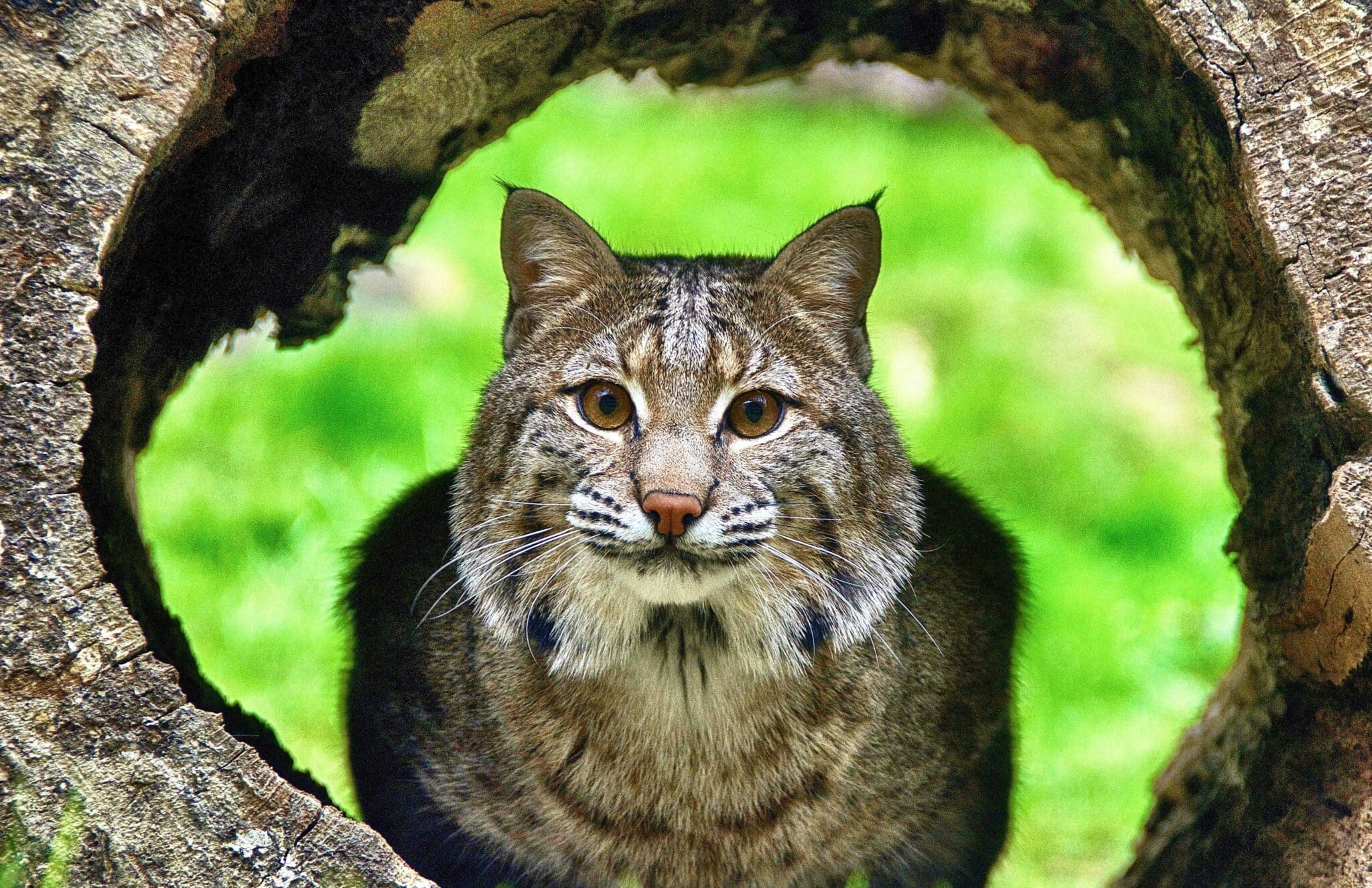Bobcat lying low in a hollow tree trunk. (Photo: Valerie / Flickr (CC BY-NC-ND 2.0))
Last week, our Historian and Resource Manager Bob Parrish was lucky to spot a bobcat dashing across Highway 70S while driving home, which inspired this week’s Nature Note!
Our Nocturnal Neighbors
Bobcats (Lynx rufus) are expert survivors, found in a wide variety of habitats across North America. From southern Canada to most of the United States and Mexico, these smart cats do well in forests, deserts, and swamps. They can even be found in areas that are considered to be urban or well populated, like Warner Parks!
Though we know there are bobcats in our parks, you are far from likely to see one during a morning or afternoon hike on our trails. Bobcats are mostly active at night, and tend to rest during the day among rocks, in hollow logs, or in dense thickets. Disturbances, common in urban or populated areas, can cause them to alternate between these dens to catnap as they wait for the sun to go down.
On the Hunt
Bobcats are carnivores and excellent hunters. A favorite meal of these cats is rabbit, but they will also take squirrels, mice, birds, waterfowl, reptiles, insects, and sometimes even deer (likely fawns or deer that are injured).
What makes them such great hunters? For starters, bobcats have an average top speed of 34 mph. They are also known to be able to jump as high as 12 feet! To compare, the average person can reach a top speed of 10-15 mph when running (Usain Bolt has set the world’s top speed at 27.33 mph). But don’t fret! Though they can outrun us, bobcats are small mammals and consider us to be predators, so they are not a threat.
Motherly Instinct
Part of the mammal class, meaning “a vertebrate, females of which have milk-secreting mammary glands for feeding their offspring”, bobcats are part of an incredibly diverse group of species. Bobcats are considered solitary animals, and females provide all the care for their young, which are called “kittens”. Their litters, around three kittens, are born furry and spotted. The families stay together until the kittens reach about one year old. Adult bobcats are described as the size of a medium sized dog. They are about 3 feet in length and stocky when well-fed and healthy. They have brown coats with numerous dark spots, short black and white tails, and slightly pointed ears…truly beautiful animals!

Thank you for joining us this week for Bob’s Nature Note! Education is a fundamental part of our mission to preserve, steward, and protect our beloved Warner Parks.

For nearly 45 years, Bob Parrish has loved Warner Parks. He began his career in 1977 as the second Warner Park Nature Center Director and has been fundamental in protecting Warner Parks through the Youth Conservation Corps, Friends of Warner Parks, and Metro Parks. Bob now works for FOWP in resource management and as a historian. He is affectionately known as the Living Library, gracing us with a “Nature Note” every week at our staff meeting, which we are proud to share here with you.


